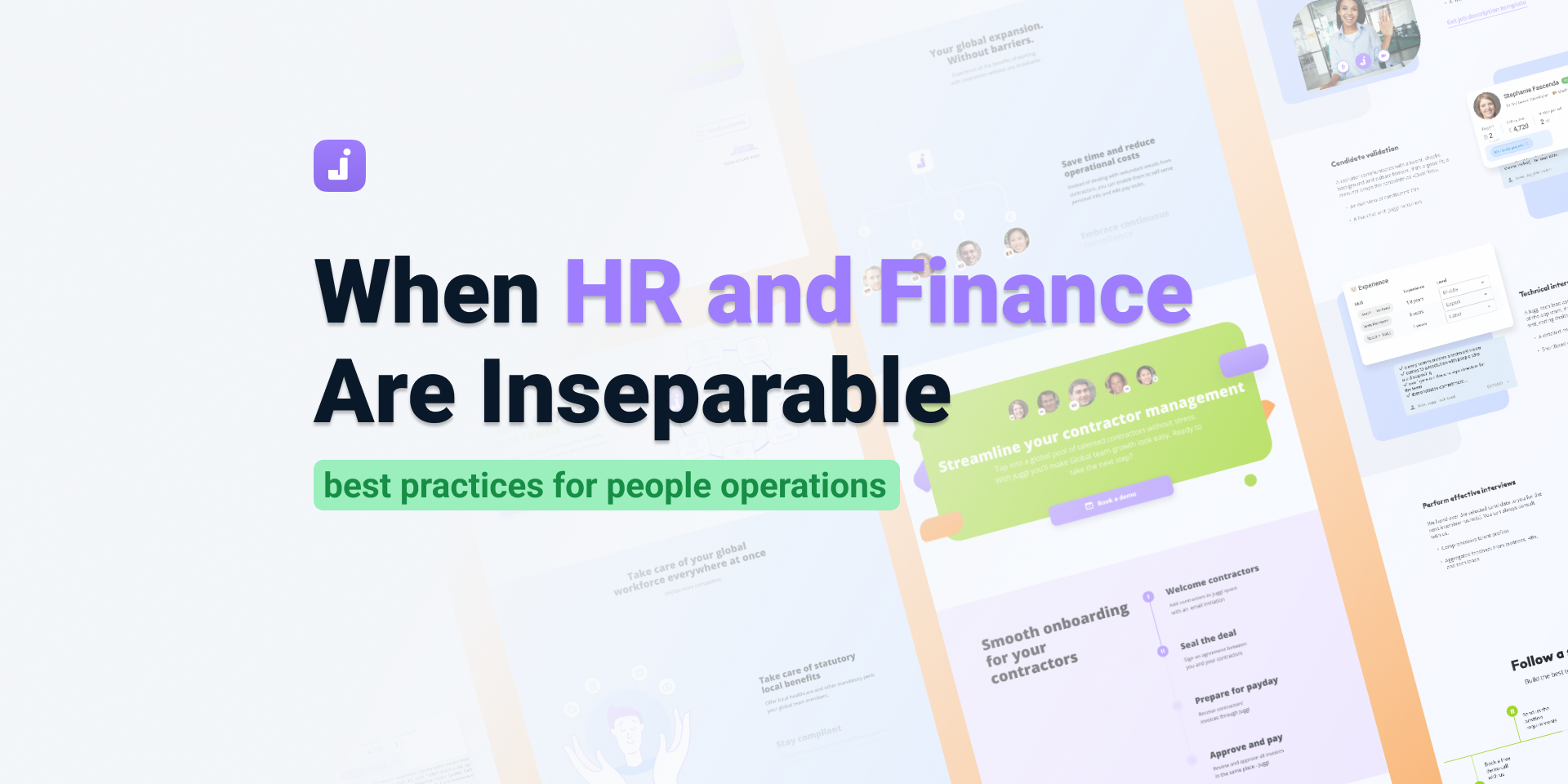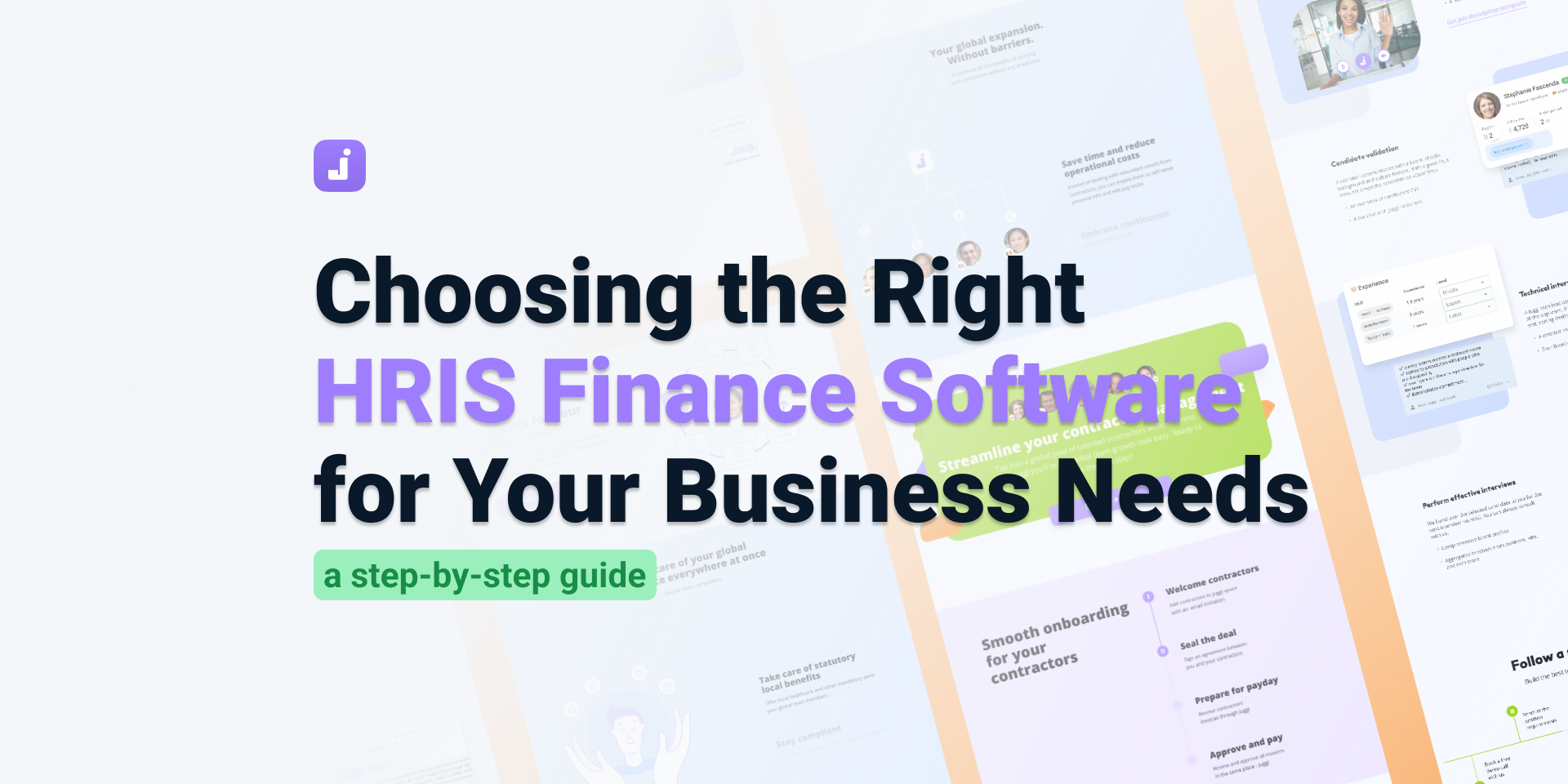Why Integrating HR and Payroll Software Is a Power Move for Business
Payroll is one of the business functions that still often flies under the radar. It’s complex, sensitive, and crucial to get right. But despite how important it is, there’s still no clear consensus on who should own it. In some companies, payroll is the responsibility of HR. In others, it’s managed by Finance. And sometimes, it’s handled by an entirely separate team or outsourced altogether.
The lack of clarity on this matter can result in errors and miscommunication, and ultimately lead to extra admin work. When HR and payroll operate independently, important information like employee status, time off, or benefits can fall through the cracks.
This is exactly why we preach about integration. Bringing your payroll and HR software together helps streamline operations and reduce errors. In this article, we’ll break down why integrating these systems matters and how Juggl approaches it in a way that works for your business.
Payroll Vs HR: What’s the Difference?
While payroll often falls under the scope of HR responsibilities, the Payroll and HR teams serve distinct purposes. Let's take a closer look to see why integration makes sense.
HR (Human Resources) is responsible for managing the employee lifecycle. That includes recruiting, onboarding, managing benefits, handling time-off requests, supporting performance reviews, and ensuring compliance with employment laws. HR is people-focused, with a big-picture view of the workforce and company culture.
Payroll, on the other hand, is about managing the technical aspect of working in a company. It involves calculating wages, withholding taxes, tracking hours, managing bonuses or deductions, and making sure employees are paid correctly and on schedule. It also involves reporting, including financials.
Each of these two uses its own software. Think HRIS or HRM and payroll management systems. But because payroll, or rather pre-payroll, relies so heavily on up-to-date employee data like start dates, job changes, or time off, it often depends on HR to provide accurate and timely information. When these functions live in separate systems, small mistakes or delays can turn into big roadblocks.
What Happens When HR and Payroll Software Don’t Work Together?
Keeping HR and payroll in separate systems might seem manageable within small teams. However, in this case, there is always a disconnect. The friction can build up over time and create inefficiencies, errors, and avoidable stress. Here are some of the most common issues that arise when these functions aren’t in sync.
Double Data Entry
Without integration, the same employee data often needs to be entered in multiple places. This increases the chance of errors. Manual input is very easy to mess up due to the human factor, and errors in data can cause delays or compliance issues down the line.
Manual Processes and Extra Admin Work
Disconnected systems typically rely on spreadsheets or emails to keep payments accurate. Not only is this time-consuming, but it also leaves room for things to slip through the cracks, especially in fast-moving businesses.
Delayed or Incorrect Payments
If HR changes like position changes or requested time off aren’t communicated clearly to payroll, the company risks pay slip errors. For example, employees can get overpaid, underpaid, or paid late – and all of this hurt team morale and trust. And this is serious: payroll errors are a major reason for employees to start looking for a new job: as many as 49% of Americans do, after only two miscalculations.
Lack of Visibility for Decision-Makers
When data is scattered across systems, it's harder for HR, Finance, or leadership to get a clear view of workforce costs, headcount, or trends. This slows down decision-making and makes strategic planning more difficult.

The Mechanics Behind HRM Payroll Software Integration
So, what does it actually mean to integrate your data into one HR and payroll system? Basically speaking, integration is about creating a smooth flow of information between two key functions. An integrated system ensures that data is shared in real time, without the need for manual updates.
Centralised Employee Data
In integrated systems, employee records like job titles, contracts, benefits, salaries, and bank details are stored in a single system or synced across platforms. Any updates made by HR automatically reflect in payroll, and vice versa.
Seamless Flow of Time and Attendance
Leave balances, working hours, overtime, and absences can flow directly from HR tools (like employee portal, time-tracking or scheduling software) into payroll. This means accurate automated wage calculations without extra admin supervision.
Automated Calculations
What if you could set up a formula for calculating your employees' wages once and forget about having to recalculate payouts manually? This is the perhaps the most crucial feature of software like Juggl – it collects information from timesheets, benefits, and requests to combine it into a transparent and accurate payslip draft. Employees then can suggest corrections where necessary, and once everything is set up, the pay slip automatically converts into a payment order for your payroll provider.
Triggered Workflows for Key Events
When events like onboarding, promotions, or terminations happen, they can trigger automated payroll updates with no need to handle them manually. Juggl allows you to set up unlimited custom triggers linked to events and teams of all types.
Employee Self-Service
This is another key feature that simplifies payroll-related tasks for both HR and Finance. A good HRIS payroll software allows employees request and track their benefits and at the same time connects this data with employee database. Managers can approve requests in one click and track their teams' balances – this removes the need for unreliable means of communication like email chains or shared calendars.
As a result, you end up with a streamlined process where your teams spend less time chasing information and more time focusing on people and performance.
What's In It for Business Growth
Integrating payroll with HR software is more than just an efficiency upgrade. It brings real, measurable advantages for business growth.
Enhanced Visibility into Workforce & Financial Data
Companies using an integrated HRIS payroll system get a unified, real-time view of employee-related metrics. Everything from pay and benefits to hours worked and time off. Organizations with connected systems report a 34% fewer data entry errors compared to those using separate tools.
Deloitte adds that combining HR and payroll data makes businesses 36% more likely to make data-driven decisions, boosting profitability and workforce alignment. Instant access to clean data helps leadership with:
- forecasting labor costs
- monitoring headcount trends
- spotting turnover risks
- acting quickly when business needs a shift
Agile Workforce Planning & Strategic Decisions
When HR and payroll data sync automatically, workforce planning becomes faster and more accurate. McKinsey found that real-time analytics capabilities can improve operational efficiency by 24% and cut down time spent on reporting by 33%.
Deloitte reports a 32% reduction in payroll errors with integrated systems. This means minimizing financial risk while accelerating payroll cycles and freeing up teams to focus on strategic work.
Conclusion
Modern times require modern solutions, and integrating HR and payroll software is a strategic move that impacts everything from day-to-day operations to long-term business growth. When these systems work together, you get cleaner data, fewer errors, faster processes, and clearer insight into your workforce. That means your team spends less time chasing down details and more time driving value.
At Juggl, we’ve built a platform that connects your HRIS and payroll functions seamlessly. From onboarding to offboarding, salary updates to time tracking, everything flows in real time without unnecessary admin work and process misalignment.










